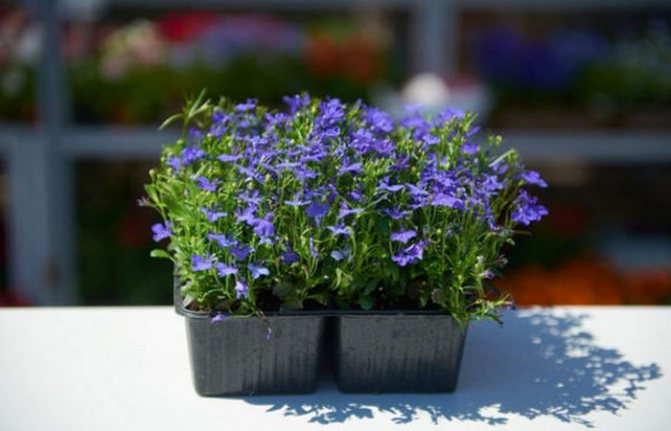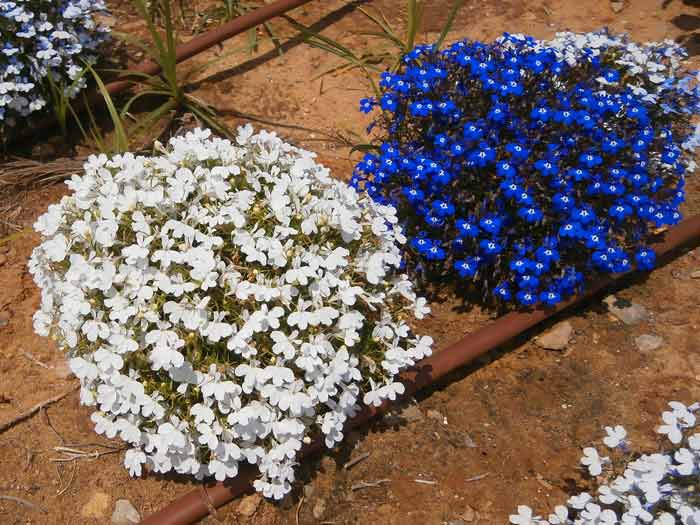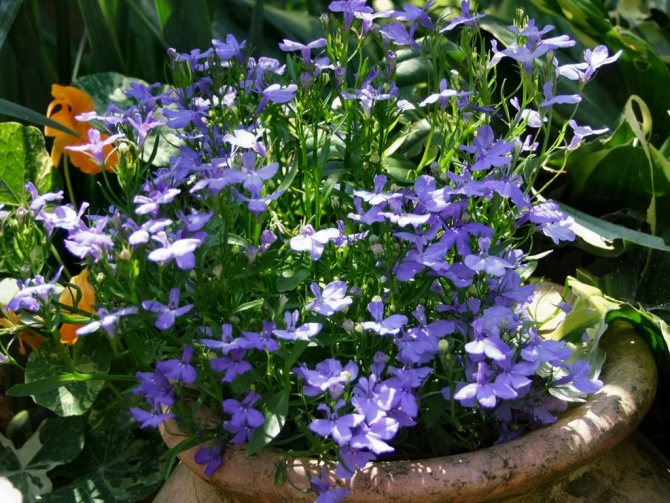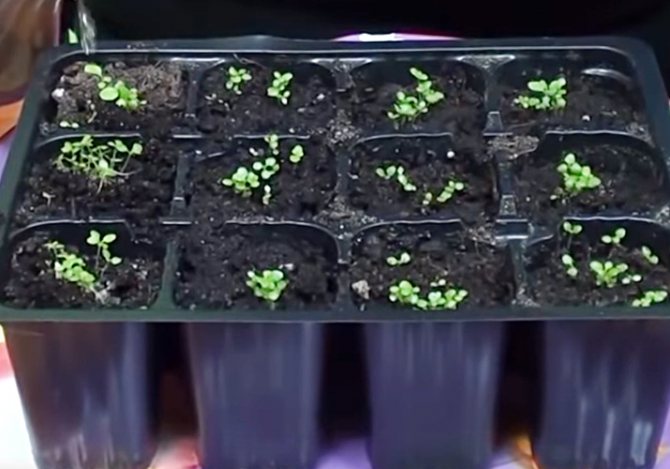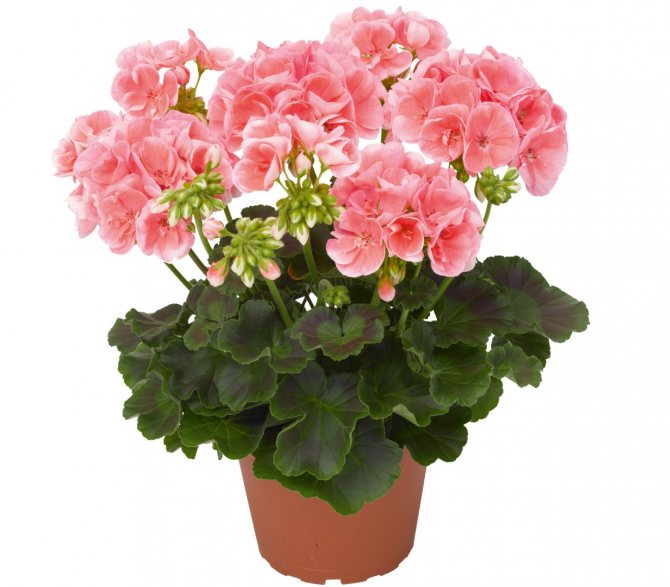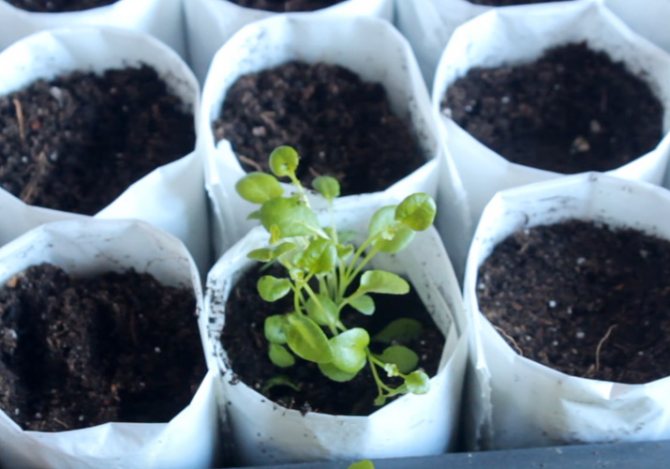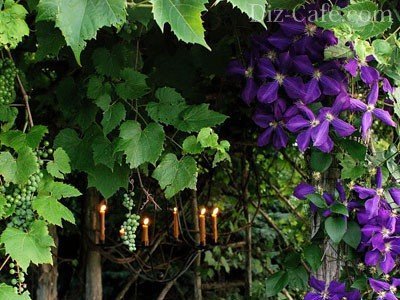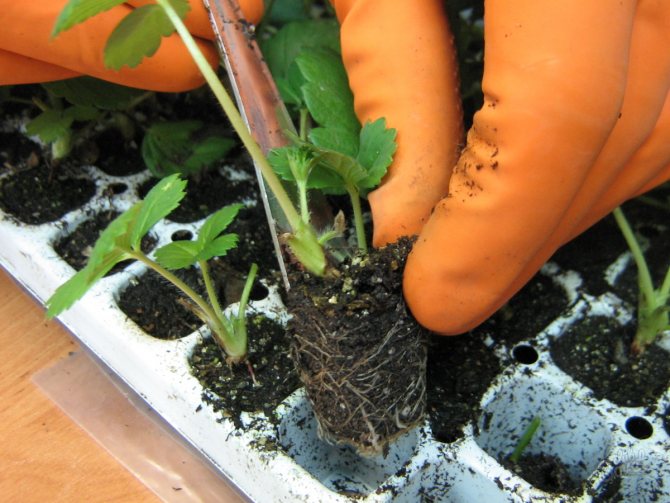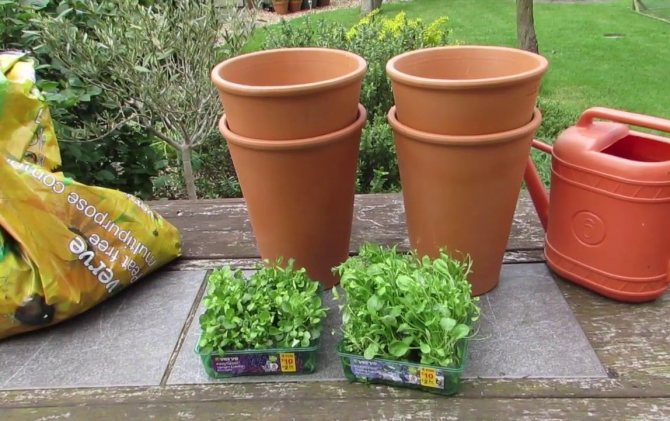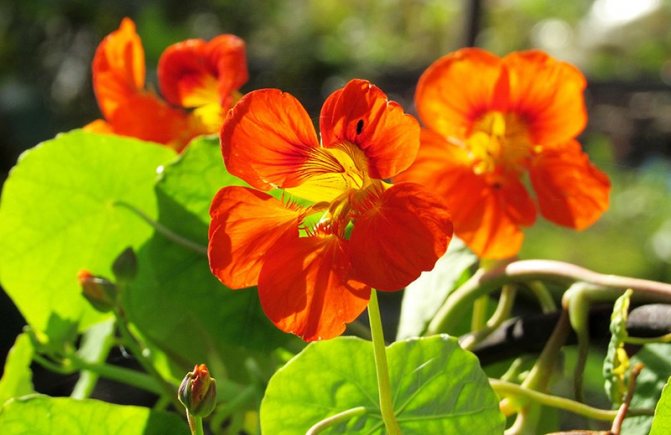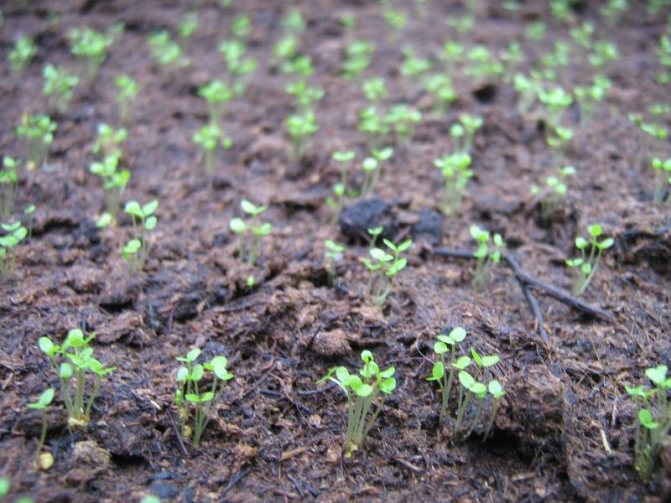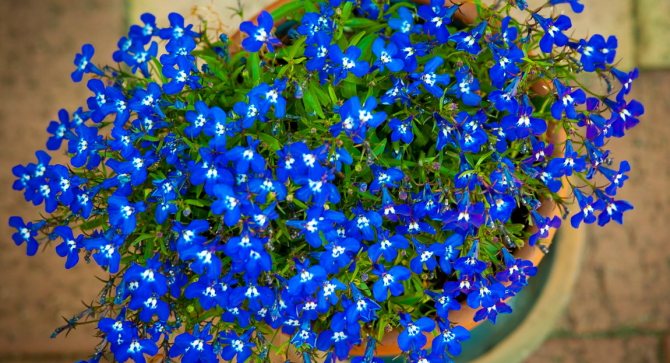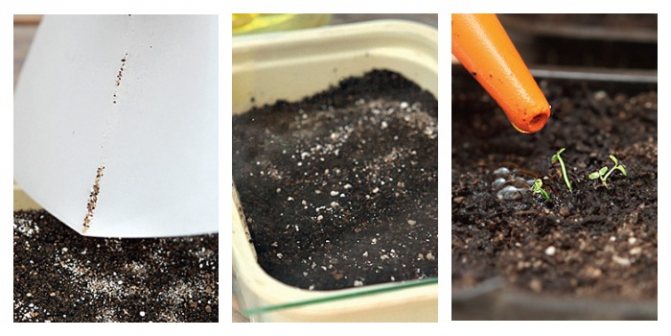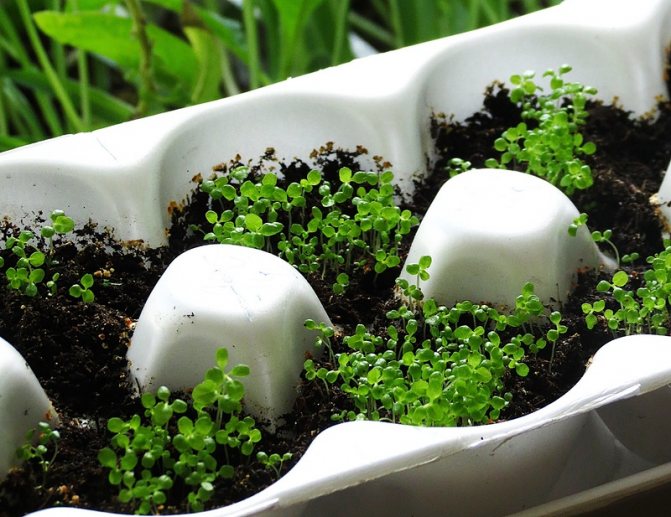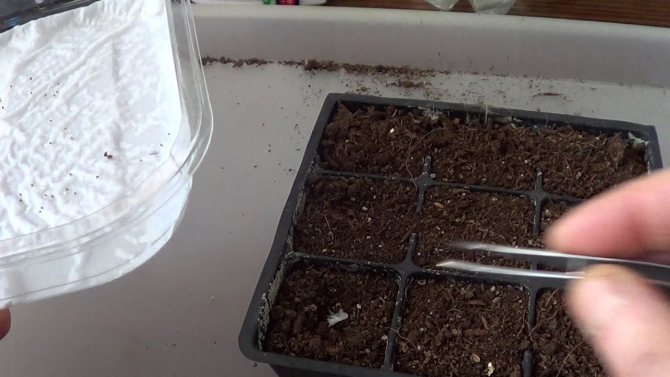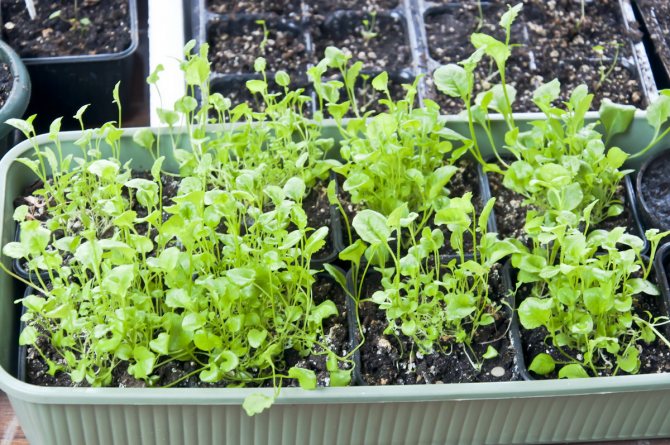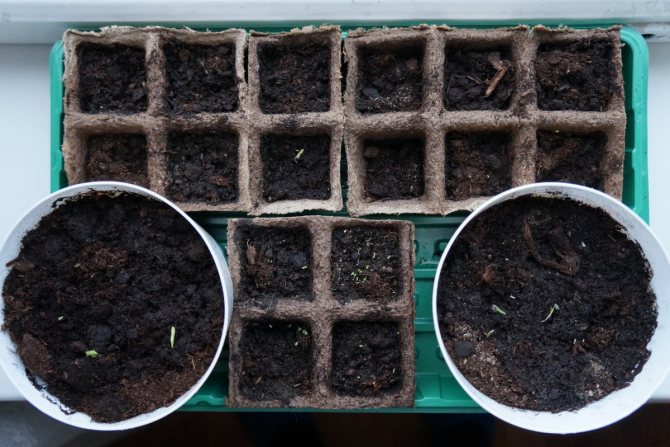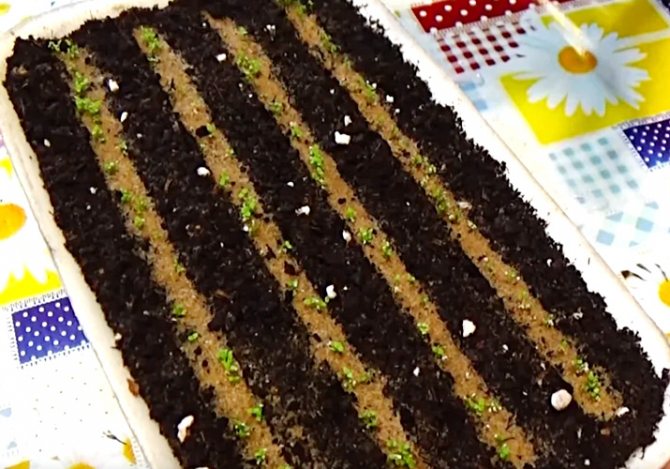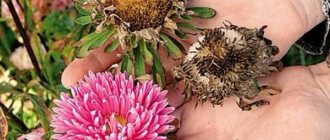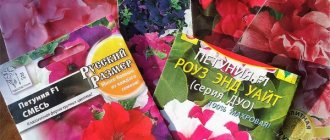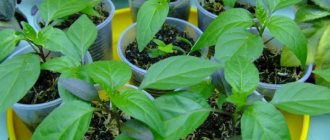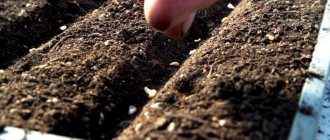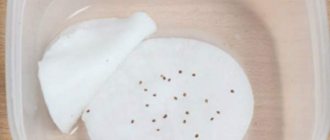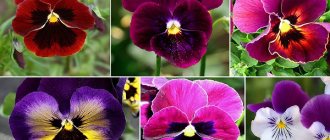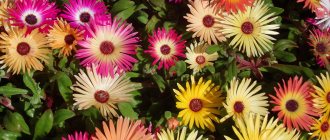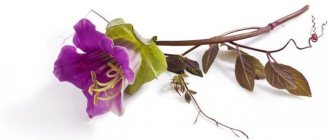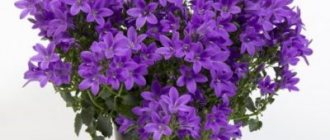Botanical description and popular varieties of culture
Lobelia belongs to the bellflower family and has the appearance of a creeping plant with drooping stems. The flower comes from southern Africa, where it lives in stony moist soil. Today he can be seen everywhere.
The plant is characterized by light green lanceolate or elliptical foliage and small sapphire flowers. It can reach a height of 20 cm. There are annuals and perennials among lobelia varieties. In our conditions, annuals grow well, in particular lobelia erinus.
There are more than 300 varieties of lobelia, differing from each other in the shape and size of the plant. In most cases, the flower has a blue or blue color of the petals. However, there are varieties with purple, purple, pink or white flowers.
There are also representatives of lobelia, which has a peephole of a different color in the color of the petal. Lobelia varieties are bush and ampelous.
Lobelia erinus, popular in our area, is found in several forms:
- compact;
- spreading;
- dwarf;
- upright;
- ampelous.
Dwarf
Dwarf lobelia is distinguished by a small indicator of the height of the bush. It is no more than 9-12 cm. The small size of the plant does not negatively affect the quality of flowering and its duration.
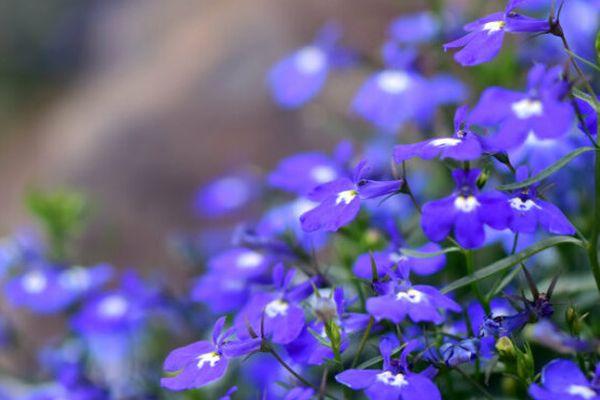
Compact
A compact lobelia is characterized by a high density of a bush with erect shoots. The height of the plant does not exceed 11-15 cm. This variety of culture is characterized by a rather large size of flowers.
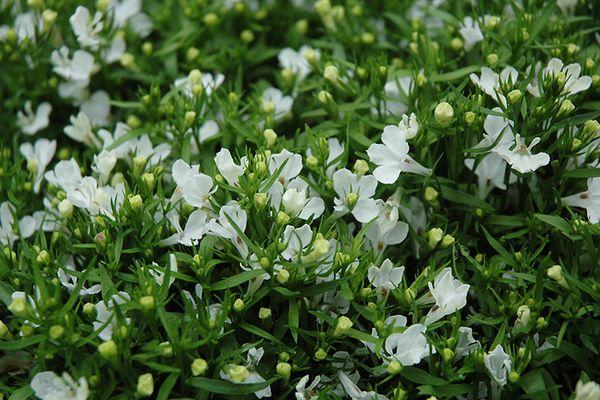

Erect
An erect lobelia is called a representative of a culture with a columnar bush reaching a height of 25 cm. Erect shoots tend to be directed straight up.
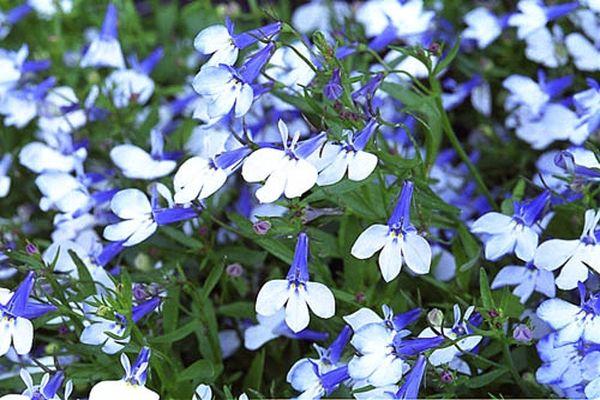

Trailing or climbing
Ampel lobelia is also called climbing. The plant is distinguished by whips hanging down, up to 35 cm long. They form a semblance of a beautiful flowering cascade. Varieties of this variety look picturesque in a pot, hanging flowerpot.
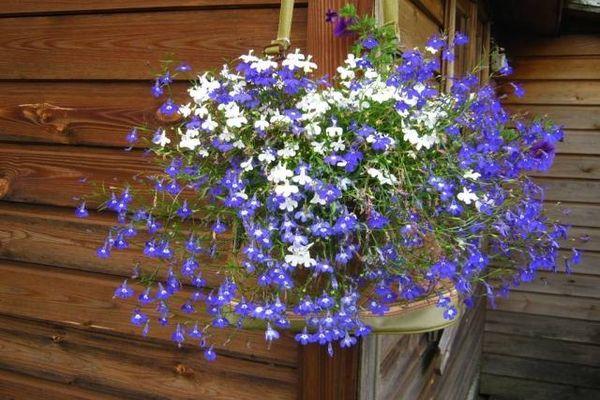

The advantages of growing by seedlings
Growing lobelia is easy. Experienced flower growers recommend doing this in a seedling way. It offers many advantages over open field cultivation from seed. Among the advantages of the seedling method is an earlier flowering. Thanks to growing from seedlings, it occurs in June, and not at the end of summer.
The method is somewhat more laborious than the seedless one. However, it allows you to achieve better and more beautiful flowering. This is possible due to healthy and strong roots of seedlings, better adaptation of seedlings to open field conditions.
The seedling method is recommended for regions with a temperate climate, where sowing seeds directly into open ground may be in vain due to unfavorable weather conditions.
Planting days
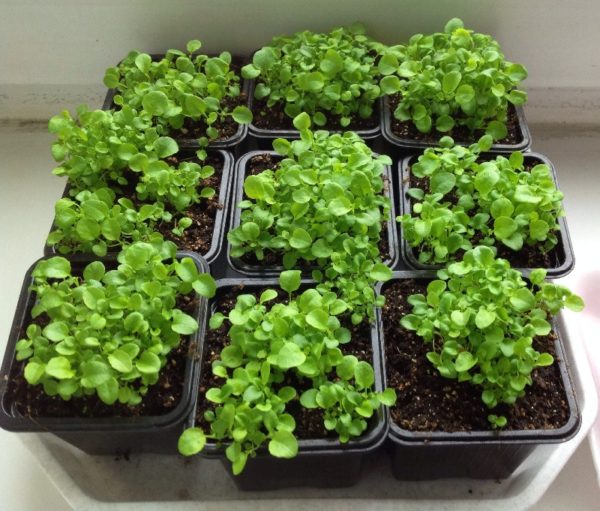

The heavenly night star can affect seedlings both negatively and positively. Lobelia seedlings are delicate sprouts with thin stems. All manipulations should be carried out carefully. If you take into account the advice of astrologers on auspicious days, you will be able to grow strong, viable seedlings. Be sure to use the basic rules of agricultural technology.
| Month | Auspicious days | Bad days |
| January | 1, 5, 6, 9, 11, 16-19, 22, 27-29 | 2, 3, 10, 25, 31 |
| February | 1-4, 6, 7, 12-14, 20, 24, 25, 28, 29 | 8, 9, 21, 22, 26, 27 |
| March | 3-6, 11-13, 17, 18, 22, 27, 28 | 7, 8, 19-21, 25, 26 |
| April | 1-2, 7-10, 13, 18, 19, 24, 28, 29 | 3, 4, 15-17, 20-22, 30 |
| May | 5-7, 11, 12, 15, 16, 20, 25, 26 | 1, 13, 14, 18, 21, 27-29 |
If it is not possible to observe the lunar calendar, then neutral days are chosen. The main thing is to exclude work on New Moon and Full Moon. The optimal average sowing time is February-April. So Lobelia will bloom early. Seed material is planted in January.
Advice!
Early sowing should have additional artificial lighting. Fitolamp will do. This will allow the sprouts to grow very quickly.
Timeframes by region:
- Siberia and the Urals. These are the coldest regions of the country. Grains are sown in early February.
- St. Petersburg and the Leningrad region. A cold, rainy climate prevails. The beginning of the preparation of seedlings from mid-February to 15-20 March.
- Moscow region and the middle lane, including Ukraine, Belarus. Saplings are harvested from the first days of March.
- The southern regions have a mild climate. Seedlings are sent to the street earlier than in other areas. Seeds are placed in pots in February. Can be sown outdoors. This is permissible after the frost is completely gone.
Growing small sprouts in the beds is difficult. In different cities and regions, the climate and the amount of precipitation differ. Before calculating the date, you need to take into account the forecasts of weather forecasters, the biological characteristics of the variety. Ampelous species have a slow development rate. To get friendly shoots with bush, the first sow earlier.
Germinating lobelia seeds from seeds at home
The seeds of the culture are microscopic in size. There are thousands of them in 1 g. One bag of seed will allow you to completely decorate the summer cottage with beautiful flowering bushes.
Lobelia should be sown after home germination on damp gauze folded in several layers. Seeds will need to be powdered with fungicide as a prophylaxis for diseases, in particular black leg.
It is customary to sow seeds by scattering them over the surface of a moistened and leveled soil. Seedling boxes should not be deep. The height of the side walls is not higher than 3 cm. After sowing, the planting can be sprayed with a growth stimulator.
Soil preparation
Lobelia likes loose, airy, non-acidic earth. For seedling bushes, a purchased one in the form of a universal substrate for flower beds is suitable. You can prepare a soil mixture with your own hands, mixing humus with sand and high-moor peat (proportion 1/4: 1/4: 1/2). It is advisable to disinfect it by heating it in the oven and pour it over with Fitosporin.
Choice of capacity
Lobelia seedlings can be grown in crates, cups, pots, specialized trays, or peat tablets.
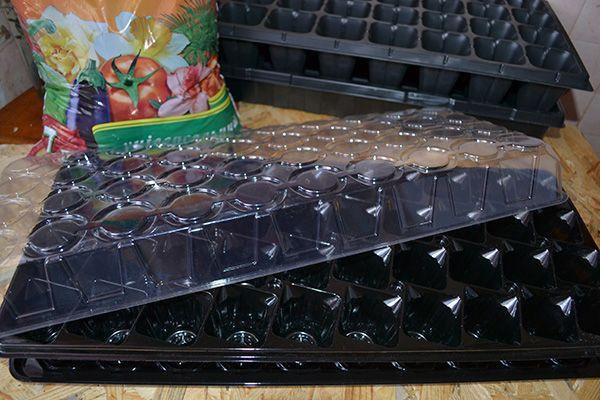

Seeding methods
The seed requires shallow sowing on the ground. This can be done evenly in several ways.
Sowing in the snow
One of the tricks of even sowing lobelia seeds, according to experienced growers, is sowing on the snow. On top of the soil mixture, it is required to apply a small layer of snow mass. Seed material is sown on it. As the snow melts, the seeds will be drawn into the soil to the desired depth.
In peat tablets
It is good to sow lobelia seeds in purchased peat tablets. The seed is kept for some time in Epin's solution. After swelling with a toothpick, spread the tablets over the surface. Cover with foil.
The seedlings obtained in this way do not need to be dived. Seedlings are transplanted to a flower bed, first cutting the film on tablets.
In tea bags
Lobelia seedlings can be obtained by growing seeds in tea bags. They are a great alternative to store-bought peat tablets and pots.
Experienced flower growers recommend using Lipton tea bags, which are double and have a seam that needs to be cut.After that, the soil mixture is poured into the bags, leaving the tea leaves at the bottom (it is assigned the role of a drainage layer). The soil bags are placed in a container.
It is recommended to water the soil in tea bags with Epin, dissolving the product with water (ratio of 6 drops per 1 liter). This will promote better rooting of the seedlings.
The seed is mixed with the tea leaves and the resulting mixture is "salted" the soil in tea containers. The sachet container is covered with plastic wrap to create a kind of greenhouse.
When to sow?
Sowing lobelia seeds for seedlings is done in February, in extreme cases - in the first half of March. Earlier planting without supplemental lighting with phytolamps is impractical, since young plants will not have enough natural light.
The above terms are recommended based on the development cycle of the plant, and allow you to get abundant flowers in the flower bed already at the beginning of summer. The climatic features of the region should also be taken into account. If summer comes late, then you can wait with sowing.
Important! Seed material can be purchased from the store in bulk or in the form of granules. You can harvest the seeds yourself in the fall, when the pods are dry and turn yellow.
Necessary conditions for growth
Compliance with optimal conditions for growing seedlings is the key to obtaining strong and viable lobelia seedlings.
If you plant the seeds according to the rules, the seedlings will appear 4-10 days from the moment of sowing.
Lighting
Experienced gardeners recommend the first few days after pecking lobelia sprouts to use special electric lighting devices and supplement them by planting them. Natural light will not be enough for the plants. It is convenient to light up with a special phytolamp. A more economical alternative is the LED lamp.
Humidity
Lobelia seedlings, like its seed, are very delicate and fragile. A great difficulty at the stage of development of seedlings is the organization of their competent watering.
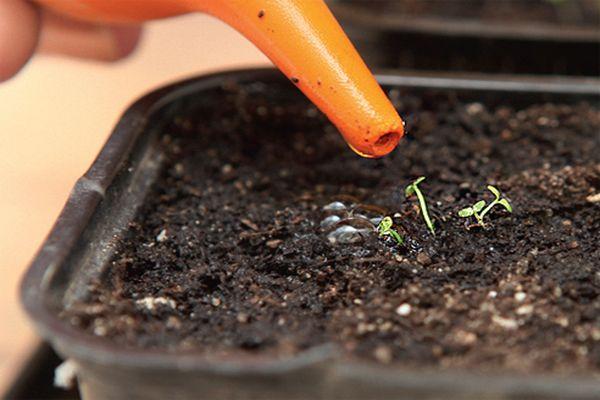

Excess moisture leads to diseases of the sprouts, and overdried soil can provoke curling of the leaves. Water the seedlings carefully so that moisture does not get on the leaves. For this purpose, it is recommended to use warm water, which was defended for several days beforehand.
Temperature regime
Compliance with the temperature regime will ensure good results when growing seedlings. Lobelia seedlings develop well at home at a room temperature of +20 - 22⁰С.
Top dressing
At the stage of growing seedlings, you should refrain from applying mineral fertilizers. This can lead to sad consequences and death of sprouts.
Picking
When real leaves appear, seedling bushes dive into separate containers in bunches of 3-6 plants. Since during this period the seedlings are quite tender, for the picking procedure it is better to stock up on tweezers or an ordinary spoon in order to transfer several sprouts to a new place along with the soil. Lobelia, whose seedlings were sown in peat pots, does not need a pick.
Pinching
Upon reaching 4-6 cm in height, the seedlings of the bush crop variety must be pinched for better branching. When 5-6 leaves appear on the plant, pinch off the top of the sprout. The measure will have a beneficial effect on the lush formation of the bush and its flowering.
Hardening
With the appearance of seedlings, they should be gradually hardened. To do this, open a container with sprouts every day. They start from 10-15 minutes in the morning and evening hours, gradually bringing the time interval to several hours. After the seedlings get stronger, the film can be completely removed from it.
When the air temperature outside the window settles at around + 11-14⁰С, this is a signal that it is time to take containers with flowers outside. The first days for half an hour, then for a longer time.
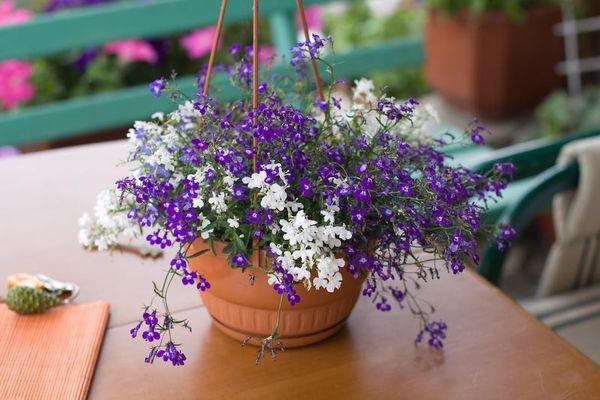

How to plant lobelia at home for seedlings using the snail method
Seedlings grown in this way do not stretch, they develop a powerful root system. Someone says that the method helps to save space on the windowsill, this is not entirely true. Before transplanting into the ground, the plants still have to be cut into separate cups, since in the snail, at a certain stage of growth, they will have little land.
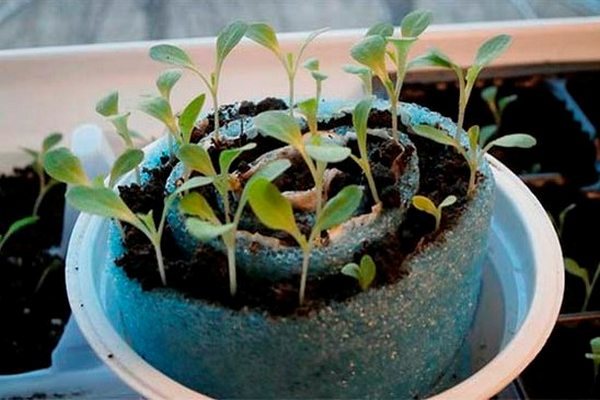

Step-by-step instruction:
- Strips 7–8 cm wide are cut from the construction substrate (2 mm), the length can be calculated independently, based on the number of seeds (each variety). Various lobelias do not sow in one snail, as they can germinate at different times.
- Spread a strip of substrate on a flat surface, with the narrow side facing you, on a small part of the tape evenly distribute the prepared substrate, in a layer of 1, 5-2 cm. Do not lay the ground along the entire length, this will complicate the further process.
- Using tweezers, they carefully lay out the seeds in a row (at a distance of 2 or 2.5 cm), stepping back from the upper edge of 0.5 cm.The tape with the seeds is very carefully, slowly twisted into a roll, making sure that the soil does not move and does not spill out.
- Holding the finished part of the snail with your fingers, pour the substrate again and put small grains almost to the end of the strip, leave a "tail" of about 3 cm, twist, fasten the finished snail with an elastic band.
- The snail in a horizontal position (with the seeds up) is placed in a wide plastic container, the "roll" must be completely placed in it in width, while leaving about 0.5 cm of free space on each side of the container.
Attention! With a slight subsidence of the earth (when transferred to a container), it is filled up. The ground should be flush with the edges of the base material.
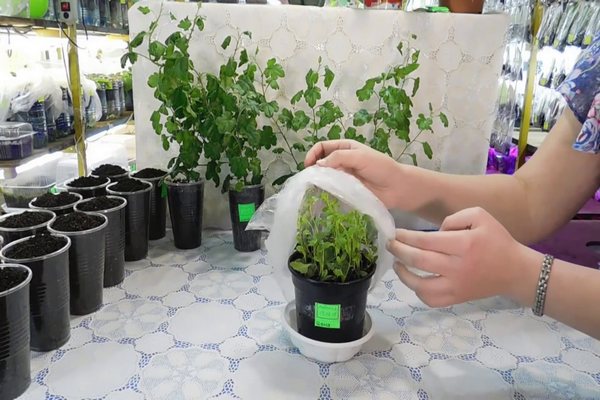

Crops are sprayed from a spray bottle so that the earth is completely wet and moisture does not remain at the bottom of the container. The snail is covered with a transparent bag, a mini-greenhouse is built. The edges of the polyethylene are fixed with an elastic band (put on a roll), the container is left open so that it is convenient to water the seedlings. Tara is placed on a well-lit windowsill; lobelia does not germinate in the shade. The temperature is maintained at the level of 24-26 ° С.
The shelter is removed when shoots appear. Water so that the soil does not dry out and is not too wet. Seedlings are planted in separate cups when 4–6 pairs of true leaves appear on them, it is possible earlier, but only if the seedlings develop poorly or stretch out. Plants are easily detached from the substrate without damaging the roots. To make it easier, they use a wooden shovel, the seedlings are transferred along with a lump of earth.
Transfer of seedlings to open ground
It is permissible to plant lobelia seedlings, both in the garden bed, and in a flower pot or a balcony box. The transshipment is carried out, as in the dive, in bundles. Bushes are planted at a distance of 15-20 cm from each other. It is better to grow flowers on loamy or loose soil.
If the soil in the flowerbed has a different composition, then the necessary soil mixture should be prepared in order to fill it into the holes when planting plants. Since lobelia has a fibrous root system, it is better to plant seedlings in shallow pits, with a depth not exceeding 25 cm.
The bushes are transplanted into open ground conditions when warm weather sets in, the threat of recurrent frosts passes. Depending on the region of cultivation, this is done in April-May.
It is worth considering that this culture does not tolerate direct sunlight and dry weather. The place for the plant should be chosen correctly.
Growing lobelia seedlings on toilet paper with a backing
Kerimov's method, which is otherwise called - roll-up or seedlings in Moscow. Take a substrate, as for a snail or from dense polyethylene, the width is also left as described earlier.
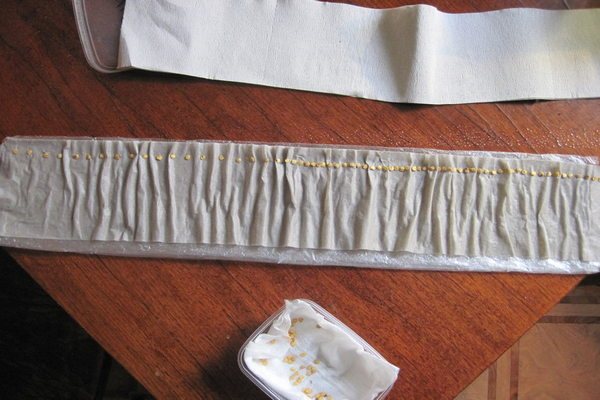

It is recommended to make ribbons no longer than 40 cm, but it is better to focus on the number of seeds. How to sow a flower correctly:
- The tape is laid out on the table, toilet paper (preferably delicate) is laid on top, so that it coincides with the substrate in width, the excess can be tucked or cut off.
- The paper is abundantly moistened from a spray bottle, retreating from the edge of no more than 5 mm, the seeds are laid out at a distance of 1, 5-2 cm.
- The grains are covered with a second layer of paper, moistened, a 1–1.5 cm layer of substrate is poured on top. The tape is twisted into a tape measure (moderately dense) and fixed with an elastic band.
Attention! Kerimov's method is convenient and simple, but it has a drawback. Lobelia seedlings should be stocky and seeding in a roll may cause the seedlings to pull out.
Immediately after twisting, the rolls are placed in a prepared container, sprayed with a spray bottle, and covered with polyethylene. You can cut a 2 or 5 liter plastic bottle in half, make vertical cuts in the lower part, up to 4 cm long, pressing the resulting "strips" to put on the top of the bottle, thus you get a convenient greenhouse, to air the seedlings it is enough to unscrew the roof, but for watering you will have to remove the upper part of the design.
It is better to sow the seeds that have hatched into rolls, but in the case of lobelia, this is impossible. They put the container in the light, make sure that the earth does not dry out, periodically pour a little water on the bottom and moisten the upper part of the roll from a spray bottle, but not abundantly. As soon as sprouts appear, the shelter is removed, in the future, the seedlings are watered only into the pallet. You can dive seedlings directly into the ground.
The specifics of plant care after transplantation
An adult lobelia, although unpretentious in care, should try to get a lush color. Basic care includes:
- correct lighting, without direct sunlight;
- sufficient root watering without moisture stagnation;
- correct feeding, excluding nitrogen compounds in fertilizers;
- pruning.
Watering and feeding
Lobelia needs good watering. Especially when it's hot outside. Ampel varieties need watering twice within 7 days. With a prolonged lack of moisture, the leaves on the plant begin to turn yellow and dry. As a result, the flower dies. However, it is not worth pouring lobelia, watering it in a timely manner.
Top dressing should be done every 14 days. At the same time, complex fertilizers are used for flowering crops. It is desirable that fertilizers are liquid.
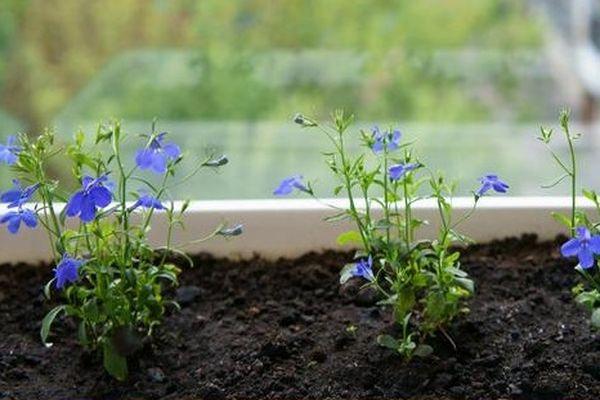

Weed removal
Caring for lobelia in a flower bed includes mandatory weed removal. The measure is necessary so that weeds do not interfere with the flower's growth and development. The manipulation is carried out after watering.
Pruning lobelia for lush bloom
The procedure for pruning a lobelia bush is resorted to several times. It is done for the first time upon completion of the first flowering (approximately - mid-summer). Cutting off the plant, leave no more than 5 cm of the stem from the surface of the soil.
Thanks to pruning, after 14 days, a second wave of flowering can be observed. It will be more lush and exuberant than the first. The procedure also solves the problem of unsightly faded stems.
Growing features
Experienced growers say that it is not difficult to grow lobelia from seeds. The main thing is to choose the right container, to observe the correct planting technology. It is equally important that the seeds germinate in comfortable conditions: lighting, watering, feeding should not be excessive, but the lack of light, moisture and nutrients in the soil will also negatively affect the health of the future seedling.
Selection of containers and its preparation
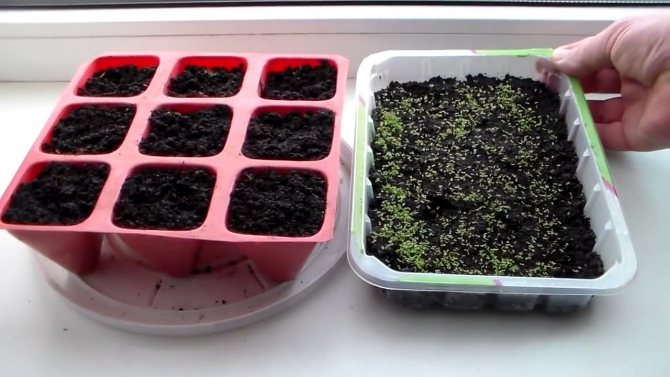

Lobelia seeds are not planted in boxes or heavy containers. Often the following is chosen as a container:
- disposable plastic cups;
- plastic container left over after buying a cake;
- peat tablets;
- purchased seedling cassettes;
- containers from yogurt, mayonnaise, etc.
For planting, a shallow container with drainage holes is selected or they are made independently using a conventional awl, which is pre-heated.This is necessary for the rapid growth of flowers, as well as to protect the seedling from mold, which often affects the plant. The selected container is filled with soil. The flower grows well in loose soil with low or neutral acidity. Purchased soil (for example, "Universal") will do, but many people prefer to prepare the soil on their own. Sand, humus and turf soil must be added to it.
Important! 1-2 weeks before use, the soil is disinfected, dried, and moistened immediately before planting.
Sowing with seeds
Due to the small size of the seeds, growers are forced to resort to some tricks that make sowing easier. The main landing options:
- With a match or toothpick. The stick is moistened with water and brought to the seeds. They stick to a wet toothpick, making them easy to place on the ground.
- Using paper. The leaf is folded into a corner and the seeds are transferred to the soil surface.
- Mixed with disinfected sand. The mixture is sprinkled on a pre-moistened soil, without making any manipulations after that (deepening or filling with soil). As an alternative to sand, take the contents of tea bags or the remains of freshly brewed coffee.
- Landing in the snow. A layer of snow is poured on top of the soil, and seeds are poured on top. By melting, the snow will carry them into the soil. After that, the land is not watered.
Regardless of the chosen planting method, the container is covered with a layer of cellophane or glass and transferred to a warm place with sufficient sunlight. The temperature in the room should be between +18 ° C and +22 ° C. The container is opened only after germination: this will happen about 7-10 days after sowing. A home-made greenhouse must be ventilated and the glass is wiped to remove the resulting condensation drops.
Lighting, watering and feeding
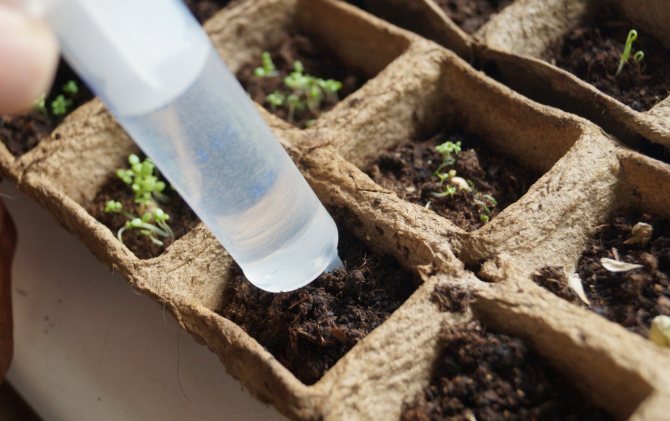

In order for the seedlings to grow quickly, they are provided with long-term illumination by installing lamps for artificial lighting. For culture, the duration of daylight hours less than 12 hours is unacceptable, usually it is extended to 14. At the same time, seedlings are protected from direct sunlight, which often cause leaf burns. For this, young seedlings are covered with a sheet of paper.
Water the seedlings with moderate portions of water to prevent rotting and the development of mold. Drying out the earth will also lead to unpleasant consequences: the sprouts will begin to curl. The safest option is considered "bottom watering": water is poured into a pan and left for half an hour. The leftovers are poured off. In order not to harm the plant, growers are advised to moisten the soil by drip (for example, through a spray bottle or syringe).
Important! The topsoil is always kept moist. On hot days, plants are sometimes watered twice.
For active growth, seedlings are fed. Most often, they take mineral fertilizers with a complex composition, designed specifically for ornamental plants. The first feeding is carried out 30 days after the appearance of the first shoots. Nutrient solutions for seedlings are made weak: the concentration should be half or three times less than in the case of adult bushes in flower beds.
The main problems and how to solve them
Lobelia belongs to wayward cultures. Failure to comply with the rules of growing and caring for flowers leads to complications and problems.
The main enemy of the plant is drought. To prevent the flowers from dying, frequent watering is required during the hot season. Drying out of the soil is unacceptable. In addition, under the influence of sunlight, yellowing of the leaves occurs. Lobelia loses its decorative effect, her health suffers.
Unable to withstand the hot sun rays against the background of insufficient watering, it dies.
Waterlogging of the soil is also undesirable. Stagnation of moisture at the roots should be avoided. For this reason, it is important that the pot in which the flower grows has drainage holes.
By the middle of summer, a problem is often observed, manifested in a weakened flowering of the bush. Elongation and yellowing of the stems are observed, the flowers become rare. The problem is provoked not only by hot weather and drought, but also by an overabundance of organic matter or nitrogen fertilizers in the soil.
The plant will need to undergo a pruning procedure. She will solve the problem, provide a second wave of flowering. The use of dressings with compositions in which potassium sulfate is present will also help to improve flowering.
Diseases and pests of lobelia
One of the main causes of lobelia diseases lies in non-compliance with the rules of care.
The most common mistake is uncontrolled watering. Because of the fear that lobelia may suffer from even a minor drought, newcomers to the business of growing flowers overuse watering. As a result, excess moisture stagnates in the soil, and this leads to the creation of a favorable environment for the rapid and unpredictable development of fungal diseases.
From excess moisture, stem rot occurs, when part of the shoot becomes gray, and subsequently mold appears in this place. Soon the whole plant is affected. Foliar irrigation can also be the cause of rot. For lobelia, this irrigation method is unacceptable and clearly leads to problems in cultivation. And this proves once again that maintaining the water balance for lobelia is of paramount importance.
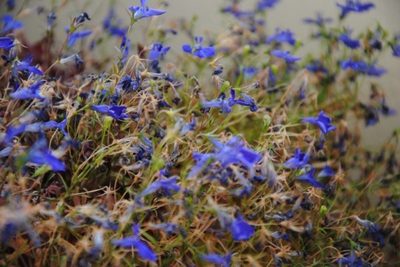

The occurrence of the disease can also be judged by the appearance of spots of various origins on the leaves. As soon as this ailment touches your green pets, you need to immediately remove the infected parts. Treat all other plantings with fungicidal solutions using a sprayer and observing the consumption rates. (Fitosporin-M)
From insects, lobelia can harm thrips, which feed on the juice of young shoots and at the same time serve as carriers of diseases. The fact that someone annoys the plant can be determined by the appearance of small white spots on the leaves. For treatment, insecticides are used.
How to get seeds after flowering
The collection of seed is carried out in the autumn. They do this when they notice that the bush dries and withers, the boxes turn yellow. The fruits are carefully cut, then put into a glass without opening.
Removal of seeds from fruits is carried out at home. You cannot do this outdoors. There is a risk of the wind spreading the seeds around the site. You can prevent the opening of the fruit by tying it with a piece of cloth.
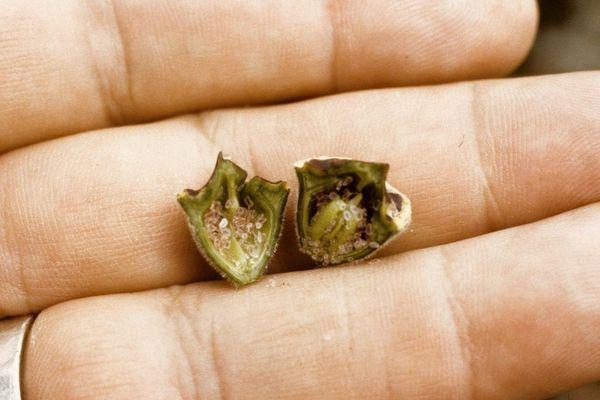

Growing the popular border flower, lobelia, by seedling allows for an earlier and more luxuriant flowering. It is enough to follow the rules and recommendations of experienced flower growers to get a beautifully blooming flower bed in your summer cottage, pleasing to the eye throughout the summer.
Lobelia types
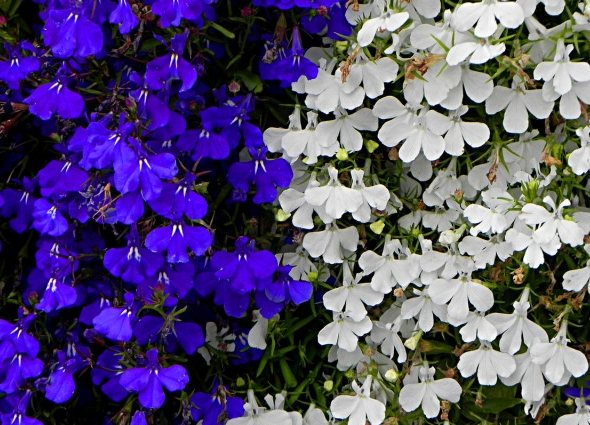

You may be interested in: Low-growing flowers for a flower bed, blooming all summer: description, names and photos Monsters: growing, care and reproduction at home Passionflower: species and varieties with a description, growing and care at home
There are more than 300 types of lobelia, the characteristics of care depend on the choice of a plant for your site. Perennial crops are monitored and cared for throughout the year. But annual varieties require care only in the summer. It is the annual plant that is widespread on the territory of Russia.
The most demanded varieties of lobelia.
- Erinus. Has a bright blue or purple color.
- The thinnest. Flowers with blue, white and lilac flowers are common.
- Strong. It stands out for its strong stems and leaves with a bright flowering.
All annual crops can be divided into two types: ampelous and bush. The latter are represented by small bushes up to 15 cm high, which are covered with abundant flowers. Ampel varieties fall beautifully down, shoots reach 35 cm.Many small flowers are formed on the bottom.
On a note!
With the help of blue and white lobelia, you can easily create the composition of a small reservoir, for example, a stream.


